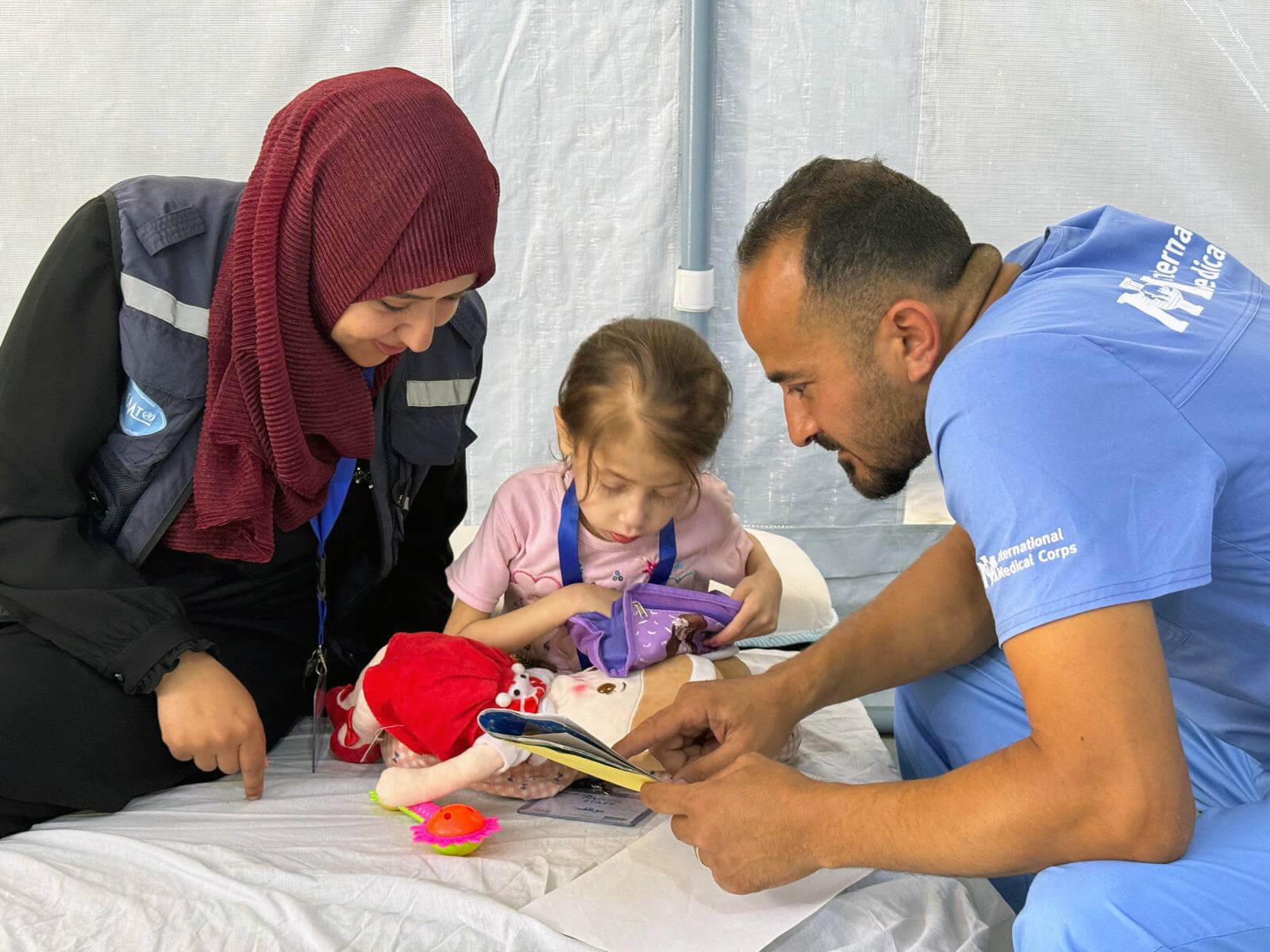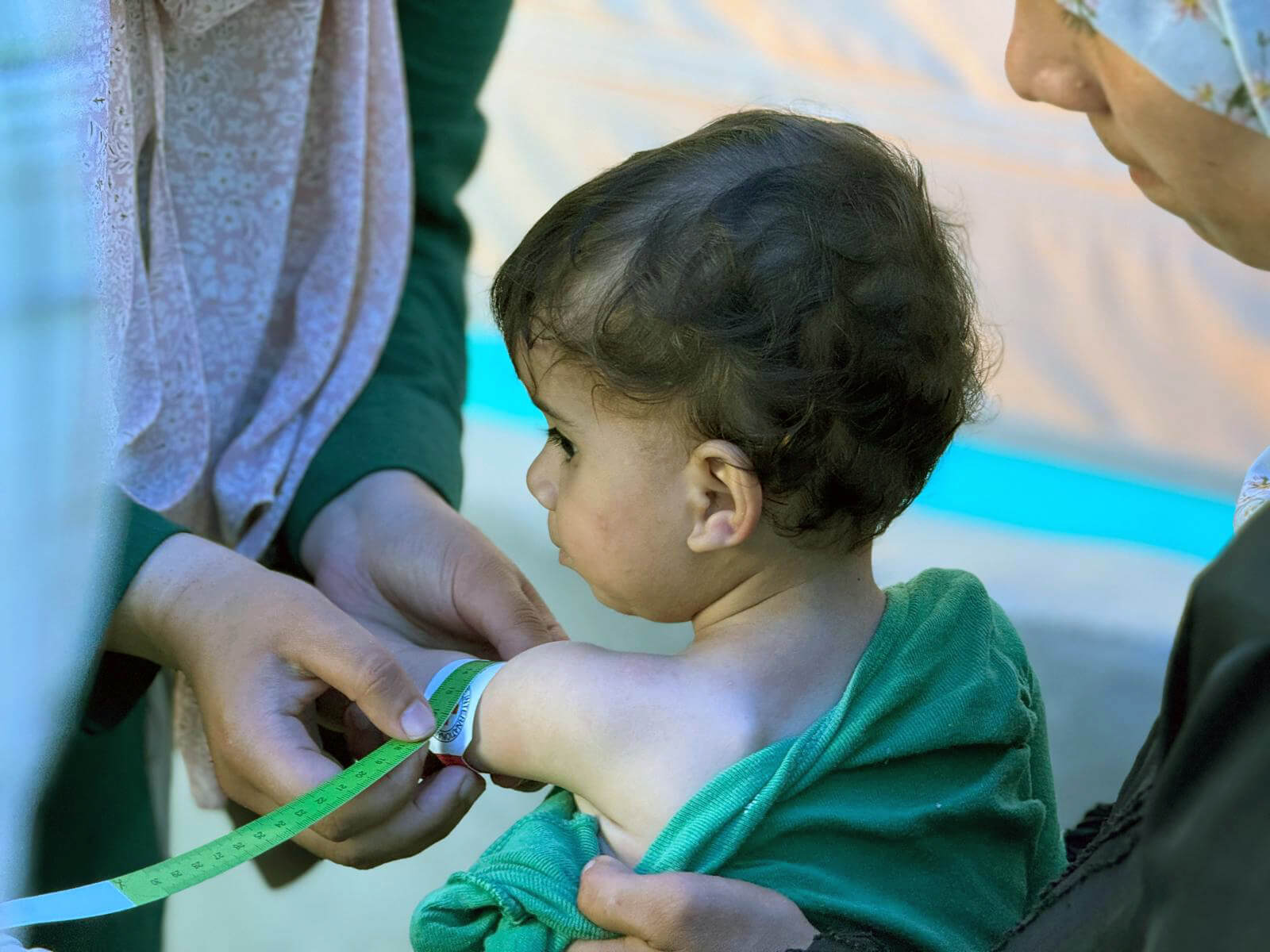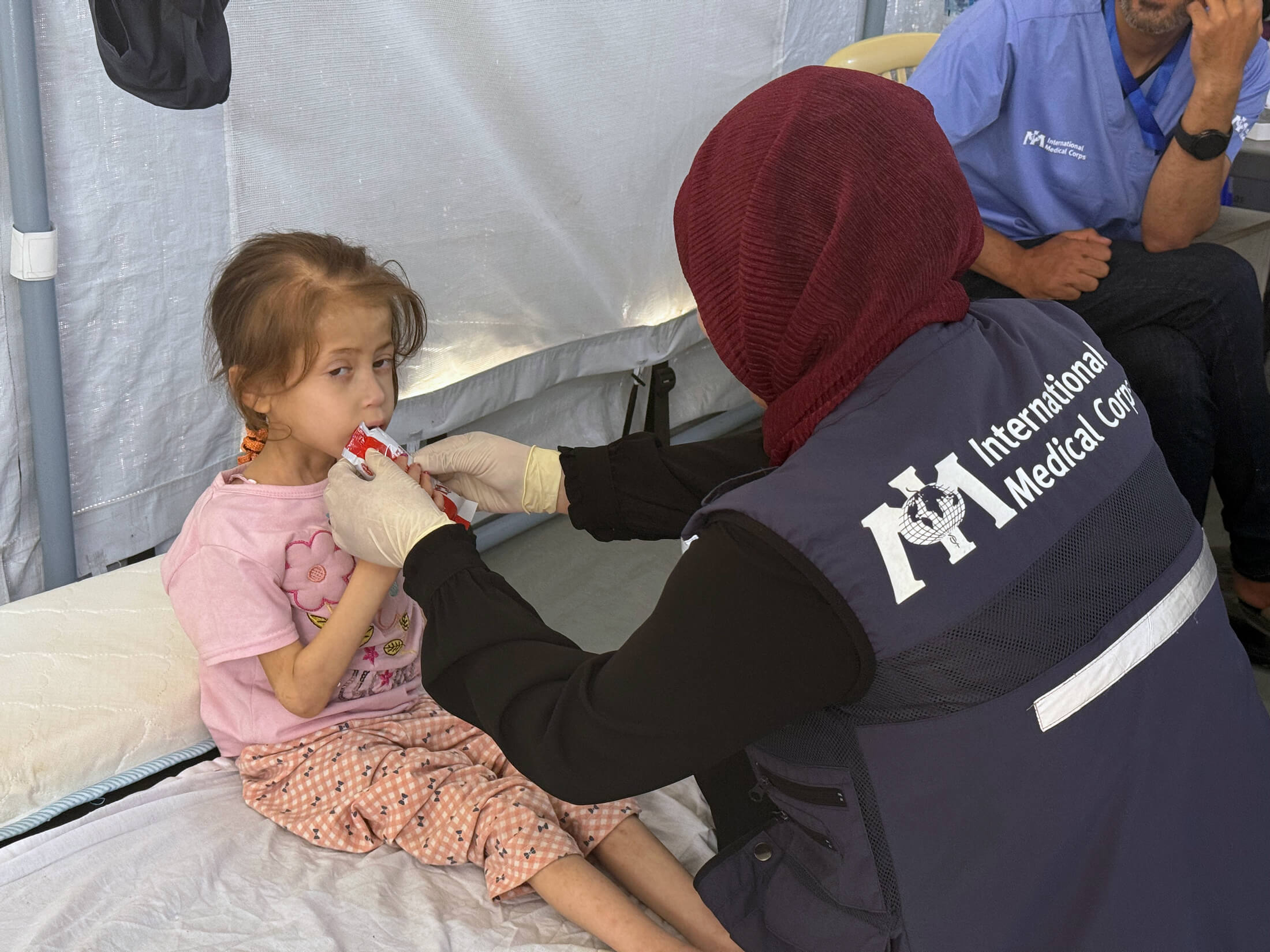When five-year-old Jana arrived at the field hospital in Deir Al Belah, Gaza, she could hardly speak or open her eyes. She was severely malnourished; her limbs were skeletal and she weighed just 22 pounds (less than 10 kilograms), which is about half the average weight for her age.
After about a year of conflict, three-quarters of Gazans rely on food assistance to survive. However, the flow of that food aid has been disrupted by the hostilities, and with Gaza’s local agriculture and food infrastructure in ruins, families like Jana’s have been forced to go days without eating. Today, almost half a million Gazans face catastrophic levels of food insecurity. Children are especially vulnerable—at least 50,000 are expected to require treatment for acute malnutrition in 2024.
“Young children’s bodies need both micro and macro nutrients for their growth,” says Sibida George, Global Nutrition Advisor at International Medical Corps. “If they’re not getting enough nutritious food, it affects their bodies faster, and they have a higher risk of death. Hunger weakens their immune systems, making them more vulnerable to diseases. Diarrhoea or malaria can be fatal for a malnourished child.”

In North Gaza, Jana grew thinner and thinner, and started to suffer from diarrhoea, vomiting and lethargy. Though her parents rushed her to a nearby hospital, the facility was so overwhelmed treating other patients that it transferred her to International Medical Corps’ field hospital in Deir al Belah, in central Gaza.
The team quickly brought Jana to the stabilisation centre and drew up a treatment plan to save her life. They gave her F-75 therapeutic milk, which is a dense formula containing vegetable fat, carbohydrates, vitamins and minerals. After a few days, they transferred her to F-100 therapeutic milk, which is used to transition patients back to solid food. They also gave Jana vitamin A supplements to help boost her immune system and support her growth.
Gradually, Jana began to open her eyes, move and laugh without pain. As her treatment continued, the team transferred her to the outpatient therapeutic programme, during which her appetite returned and she slowly gained weight. The treatment worked: her weight increased from 22 to 26 pounds, and she is continuing to make a successful recovery with the support of our nutrition and child protection specialists.
Jana’s family was lucky that they could make the dangerous journey to the field hospital. But other Gazan children aren’t so fortunate. The devastated healthcare system and the risks of travelling in Gaza make it difficult for families to seek medical care for their malnourished children.
To tackle childhood malnutrition in the community, International Medical Corps launched a “Find and Treat” campaign in June that involved training local community health workers to screen children for acute malnutrition, provide malnourished children with food and refer them for treatment.
“Training community health workers in nutrition screening, early case identification and referrals for treatment can help save the lives of many Gazan children in their community,” says nutrition expert Sibida. “By teaching local people to carry out these activities, we can increase our reach and create a sustainable impact that can continue long into the future.”

International Medical Corps also transported 100 metric tons of ready-to-use therapeutic food into Gaza to save the lives of malnourished children and help them on their way to recovery. Made with peanuts, powdered milk and other ingredients, this paste is high-calorie, nutrient-dense and easy to transport and feed to children.
As of early October 2024, we have screened 91,832 people through our nutrition campaign and continue to provide lifesaving care to hungry children like Jana. To help us continue saving children’s lives in Gaza—and around the world—donate to International Medical Corps today.

